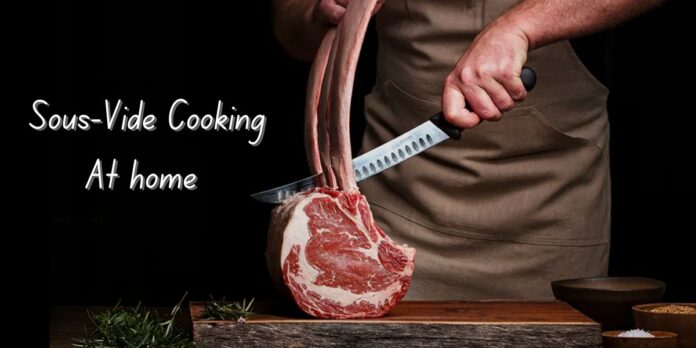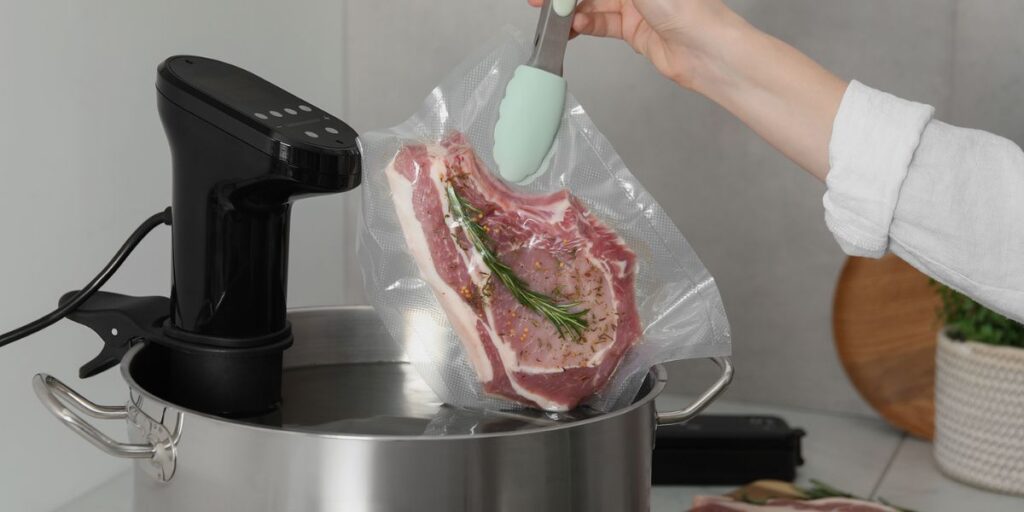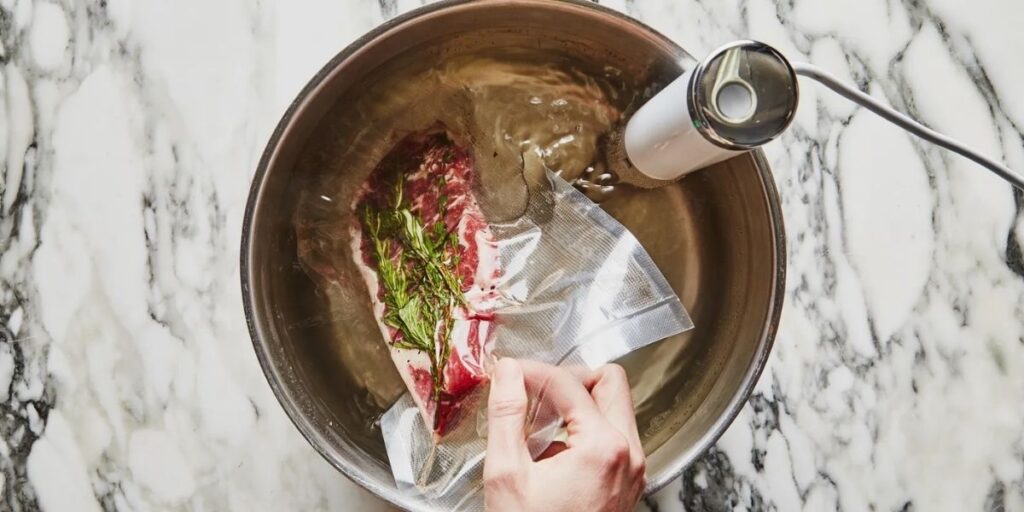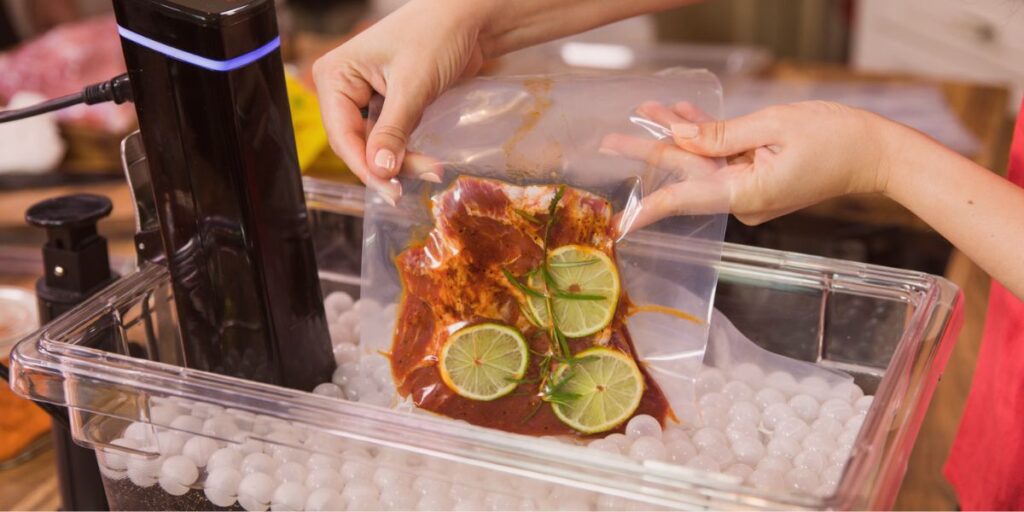Sous-vide, a French term meaning “under vacuum,” is a culinary technique that has gained immense popularity among home chefs in recent years. Once reserved for professional kitchens and high-end restaurants, sous-vide cooking has made its way into households around the world, offering an easy way to achieve perfectly cooked meals. This method involves sealing food in airtight plastic bags and submerging it in a water bath at a precisely controlled temperature. Unlike traditional cooking methods that rely on high heat, sous-vide cooks food slowly and evenly, resulting in superior flavor, texture, and consistency.
If you’re curious about bringing this professional technique into your home kitchen, this article will guide you through the essentials of sous-vide cooking, from the equipment needed to tips and tricks for the best results.
Why Sous-Vide?
The sous-vide technique is beloved for its precision. By cooking food at a consistent, low temperature, you eliminate the risk of overcooking or undercooking. This method allows you to achieve restaurant-quality results with minimal effort.
Key benefits of sous-vide cooking include:
- Consistent Results: The precise temperature control ensures that your food is cooked evenly from edge to center. Whether you’re cooking meat, vegetables, or seafood, the results are always consistent.
- Enhanced Flavor: Sous-vide cooking locks in juices and flavors, preserving the natural taste of the food. The sealed bag creates a perfect environment for herbs and marinades to infuse the food during cooking.
- Tender Texture: Tough cuts of meat become incredibly tender when cooked slowly at low temperatures, while delicate items like fish and eggs remain perfectly cooked without the risk of becoming rubbery or dry.
- Convenience: Once you’ve set the temperature and placed the food in the water bath, sous-vide requires little to no attention. You can go about your day while your meal cooks perfectly on its own.
Essential Equipment for Sous-Vide Cooking at Home
To start sous-vide cooking at home, you’ll need a few basic pieces of equipment:
- Sous-Vide Precision Cooker: This is the core tool for sous-vide cooking. It heats the water to your desired temperature and circulates it to ensure even cooking. Popular options include brands like Anova, Joule, and Instant Pot.
- Vacuum Sealer or Ziplock Bags: For true sous-vide cooking, you’ll need to vacuum-seal your food in an airtight plastic bag. However, high-quality ziplock bags can also work if you use the water displacement method to remove air before sealing.
- Water Bath or Large Pot: The precision cooker needs to be submerged in a water bath. You can use any large pot or container that’s big enough to fit your food.
- A Cast Iron Skillet or Torch (Optional): Once your food is cooked sous-vide, you’ll often want to give it a quick sear to develop a flavorful crust, especially for meats like steak. A hot skillet or kitchen torch can give you that perfect finishing touch.
Cooking Times and Temperatures
One of the key aspects of sous-vide cooking is selecting the right time and temperature. While it can vary depending on your ingredients and desired doneness, here are some general guidelines:
- Steak: For medium-rare steak, cook at 130°F (54°C) for 1-4 hours. For medium, aim for 140°F (60°C).
- Chicken Breast: Cook at 145°F (63°C) for 1-2 hours. The chicken will be juicy and tender, unlike the often dry results from traditional methods.
- Fish (Salmon): For moist and flaky salmon, aim for 120°F (49°C) for 30 minutes to 1 hour.
- Eggs: Sous-vide eggs are incredibly creamy. Cook them at 165°F (74°C) for 13 minutes for a perfect soft-boiled egg.
Because the temperature is controlled so precisely, you can leave your food in the water bath for a longer period without it overcooking or drying out.
Simple Sous-Vide Recipes to Try at Home
If you’re new to sous-vide cooking, here are a couple of beginner-friendly recipes to get you started:
- Sous-Vide Steak: Season your steak with salt, pepper, and fresh herbs like rosemary or thyme. Seal it in a vacuum bag and cook at 130°F (54°C) for 1-2 hours. After cooking, sear the steak in a hot cast iron skillet with butter for 1-2 minutes per side. The result is a steak with a crispy crust and a perfectly pink interior.
- Sous-Vide Chicken Breast: Season your chicken with salt, pepper, and garlic powder. Cook at 145°F (63°C) for 1-2 hours. After removing it from the water bath, quickly sear it in a skillet to give the chicken a golden-brown crust.
- Sous-vide Vegetables: Vegetables like carrots, asparagus, or potatoes benefit from sous-vide as well. For carrots, try cooking them at 185°F (85°C) for 1 hour with a little butter, salt, and thyme. They’ll come out tender and full of flavor.
Sous-Vide Cooking Tips and Tricks
To maximize your sous-vide success, keep these tips in mind:
Use Fresh, High-Quality Ingredients: Because sous-vide enhances the natural flavor of ingredients, starting with the freshest possible produce and proteins will give you the best results.
- Season Generously: Sous-vide cooking locks in flavors, so don’t be afraid to season your food well before sealing it in the bag.
- Be Patient with Tough Cuts: While sous-vide can make tough cuts tender, it requires more time. Cuts like brisket or short ribs can benefit from cooking at lower temperatures for 24-48 hours for optimal tenderness.
- Finish with a Sear: While sous-vide produces perfectly cooked food, the texture can sometimes be too uniform. A quick sear in a hot pan or with a blow torch will give your meat a nice crust and a burst of flavor.
Final Thoughts
Sous-vide cooking at home offers a perfect balance of precision, convenience, and flavor. Whether you’re a novice or a seasoned home chef, this method allows you to elevate everyday meals into gourmet dishes with minimal effort. With just a few pieces of equipment and a little know-how, you can start enjoying restaurant-quality meals in your kitchen. Happy cooking!





